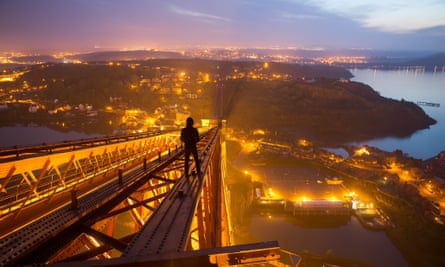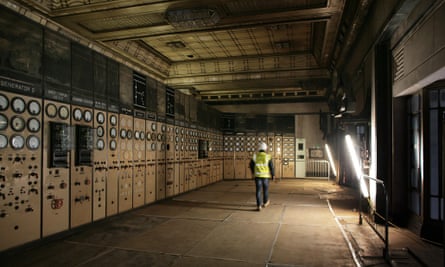Recently in Waco, Texas, a deadly brawl broke out between rival biker gangs. Most of the news stories around the event have highlighted the facts: the numbers of those killed, injured and arrested, how the police responded, and whether any innocent bystanders were caught in the melee. But, as an ethnographer, I am more interested in the culture of the bikers themselves. It seems to me that what this story calls for is long-term immersion reminiscent of the gonzo journalism of Hunter S Thompson in the 1960s with the Hell’s Angels. As Peter Høeg has written, “There is one way to understand another culture. Living it.”
The most alluring stories about cities are those that revolve around our relationships to places and each other. Cities are where wealth pours, where the poorest hide and where power plays out in the spaces in between. This has always been the case, though now these flows are more visible than ever before. The social unrest in Baltimore over the past few months has made this clear, as daily footage was streamed around the world of clashes between the state and its citizens, from thousands of perspectives.
However, with increasing exposure, the risk also increases that the story gets boiled down to representations where the most spectacular components – those most resembling a Hollywood film – float to the top and are plucked and presented as wholly representative. The battle lines (sometimes less literal than in Waco) that emerge in cities are often an indication of something more systemic bubbling beneath the surface.

The sensibilities of a researcher or journalist who undertakes what the anthropologist Clifford Geertz called “deep hanging out” is more crucial than ever. What we need in Waco, Baltimore and Brixton is not more shallow coverage of clashes; we need to embolden new ethnographers and long-form journalists in those communities to pen stories from the inside out.
Understanding the nuances of city stories, and tracing those tensions, requires immersion and patience. Whether we are writing about police work, protests, squatting, free parties, banking or parkour, the best socially engaged journalism – like the best university research – is rooted in participation, spiked with empathy, and resists being reduced to spectacle fodder.
As any war correspondent will tell you, immersion can also be dangerous. Going deep can cause us to lose a sense of the broader picture. Hanging out means we might be changed by our experiences. Immersion may mean that we, as storytellers, become part of that story. However, some of the most powerful work about cities has embraced those dangers and folded them into the narrative – as I tried to do in my research with urban explorers in London over the past few years.
When I arrived in London, in 2008, I knew little about urban exploration and even less about photography (the principal medium of these explorers). My first trespasses with what would become the London Consolidation Crew, into the power control rooms of Battersea power station and the derelict corridors of Victorian mental hospitals, were terrifying, thrilling and edifying.

By 2010, I had explored hundreds of locations in five countries with them, including an abandoned Soviet military base outside of Berlin called Vogelsang, where we stood on launch pads that once held nuclear missiles perched and primed to fire at London. Embedded with this crew, I have walked London’s hidden rivers, run railway tracks in the middle of the night to access ghost stations in the Tube, dangled my legs over the edge of an 80-storey skyscraper in Chicago and helped build a secret hideout – sans permission – underneath the streets of Paris. Most importantly, though, I built bonds with a community that will last a lifetime, and those experiences saturate everything I write and do now.
Just as the boundaries between academic disciplines are breaking down, so too is the brittle boundary between research and journalism. A clutch of good work through history has straddled this edge. For instance, Henry Mayhew’s 19th-century social surveys of London’s poor, Douglas Harper’s 20th-century visual research on freighthopping, and Alice Goffman’s 21st-century ethnographic accounts of African Americans trapped in a revolving door of legal precarity in Philadelphia.

All of these projects share a commitment to immersion that undermines the boundaries between the researcher and the researched. We are saturated in a milieu of small stories about people asserting their rights to cities in various ways. The empathetic eye of the journalist-ethnographer can locate those stories and stick with them, stepping over the line from observation to participation. Doing so carries with it dangers – but then cities have always been dangerous places. That is part of why we love living in them.
Five of the most influential ‘gonzo’ ethnographies
- On the Run: Fugitive Life in an American City by Alice Goffman
The most important ethnography I have ever read, Goffman’s gripping narrative of living for six years in an inner-city neighbourhood in Philadelphia made me see race and class in America in a different light, and wonder – as many good ethnographies will – how she ever got as close to the community as she did. - Women and Bullfighting: Gender, Sex and the Consumption of Tradition by Sarah Pink
Pink embedded herself with female bullfighters in Andalusia and her photographs of their practice became both invaluable research materials and valuable gifts for the community. - Hell’s Angels: The Strange and Terrible Saga of the Outlaw Motorcycle Gangs by Hunter S Thompson
Thompson’s first non-fiction novel is a breathless and brave portrait of the most notorious biker gang in the world, which led to him being brutally assaulted for his criticisms of their macho culture, much as he clearly also revelled in it. - Good Company: A Tramp Life by Douglas Harper
A well-written and beautifully photographed ethnography of Harper’s experiences in 1960s America, crossing the country with tramps in box cars headed west on the search for transient agricultural work. - Empire of Scrounge: Inside the Urban Underground of Dumpster Diving, Trash Picking, and Street Scavenging by Jeff Ferrell
In this insightful and often mirthful auto-ethnography, everyday survival meets research methodology when Ferrell quits his job as a tenured professor and lives for eight months on what he finds in other people’s bins.
Author, academic and urban explorer Bradley Garrett will be one of the speakers at the Guardian Masterclasses How To Write About Cities seminar on Saturday 23 May. Go here for more details.
